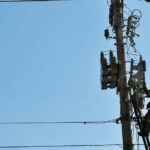The rise and rise of local sustainable power plants on campuses.

The energy transition is a key component of a climate action plan.
Colleges and Universities have always played a significant role in technological advancement, with clean energy too, they are at the forefront and driving change. Many campuses across the country are aiming to be carbon neutral in the next couple of years. In order to attain these goals, campuses are trying to find ways to reduce their energy consumption through efficiency upgrades and clean energy initiatives to encourage energy conservation habits.
Did you know, campuses around the United States serve more than 20 million students, making them big energy consumers? This makes a campus an ideal place to champion the green energy transition.
Why do microgrids make sense for campuses?
High utility costs can be too painful for campuses.
Campuses, especially community colleges need to be judicious about spending.
A consistent supply of power is essential for any campus. A campus must keep things running smoothly. In the event of an outage, students expect their institution to keep the power on and emergency services operational. The need for energy resilience has become more compelling as the grids are getting old and fragile and we are dealing with more instances of natural disasters now.
The on-campus solar energy solutions can help campuses to shift to 100 % green energy. College campuses are ideal places to champion the green energy transition, colleges reflect the good, they inspire generations and they are always willing to try something new. On a more practical level, solar power systems offer a dependable source of unlimited, clean energy and help reduce emissions. While fossil fuels are a finite source of energy, solar power is not and this provides an incredible advantage to campuses as the energy needs of campuses are always so high.
Also, microgrids can help campuses reduce peak demand charges, which for some institutions can be onerous, accounting for as much as 30%–70% of total monthly electric charges, according to a report from NREL and the Clean Energy Group.
Furthermore, campuses can build partnerships with local communities to expand clean energy and can help create clean energy jobs, and bring down costs.
Benefits of a microgrid for campuses:
- Realize the climate action plan: On-campus solar energy solutions can help campuses shift to 100 % green energy.
- Savings: For campuses, solar power systems offer a dependable and affordable source of unlimited, clean energy. The cost of electricity has risen considerably over the past few years. Because big campuses use a great deal of electricity, they have been the primary victims of these price hikes and microgrids can help considerably with savings.
- Achieve environmental stewardship practices.
- Workforce development & green jobs training: Campuses can build partnerships with local communities to expand clean energy and can help create clean energy jobs.
- Increased resiliency: Microgrids can provide resiliency during outages.
Advantages of Solar Microgrid over Solar-Battery System:
Ability to use Solar System when power is out – Without a microgrid, the system must be shut off.
Resiliency
– Protects data center and other critical buildings during power outages
– Community resource center during emergency and power outages
– Avoid using diesel gen-sets for backup power
Better Intelligent system for future-proofing
Minimal Cost difference over Battery System
Future Microgrid incentives and tariff may not be available to a BESS system
Grid Services Revenue
Gridscape’s microgrid system can be the best solution for campuses.
Gridscape is the largest and well-established name specializing in developing and deploying standards-compliant future-proof products and solutions for renewable energy microgrids and fleet charging. Intended to serve as a locally produced sustainable power plant, these microgrids allow sites to become less reliant on the grid by using local sources of energy. They can provide as much as 90% independence from the grid energy, and thus reduce overall energy cost & provide backup clean emergency power during PSPS or other power disruption events. Gridscape with its ‘Product Centric’ approach to microgrids integrated with fleet EV charging solutions allows for lower cost of installation and reduces the time for deployment by substantially lowering integration issues. It expects to deploy and operate over 35 microgrids in California public and commercial facilities over the next 12 months. The list of Gridscape’s microgrid and EV charging customers and partners is as follows:
Unlike traditional microgrid developers, Gridscape employs a holistic product-centric, artificial intelligence (AI) based software-driven approach to designing, deploying, and managing microgrids. It also integrates Electric Vehicle (EV) charging and other controllable loads into its solution.




